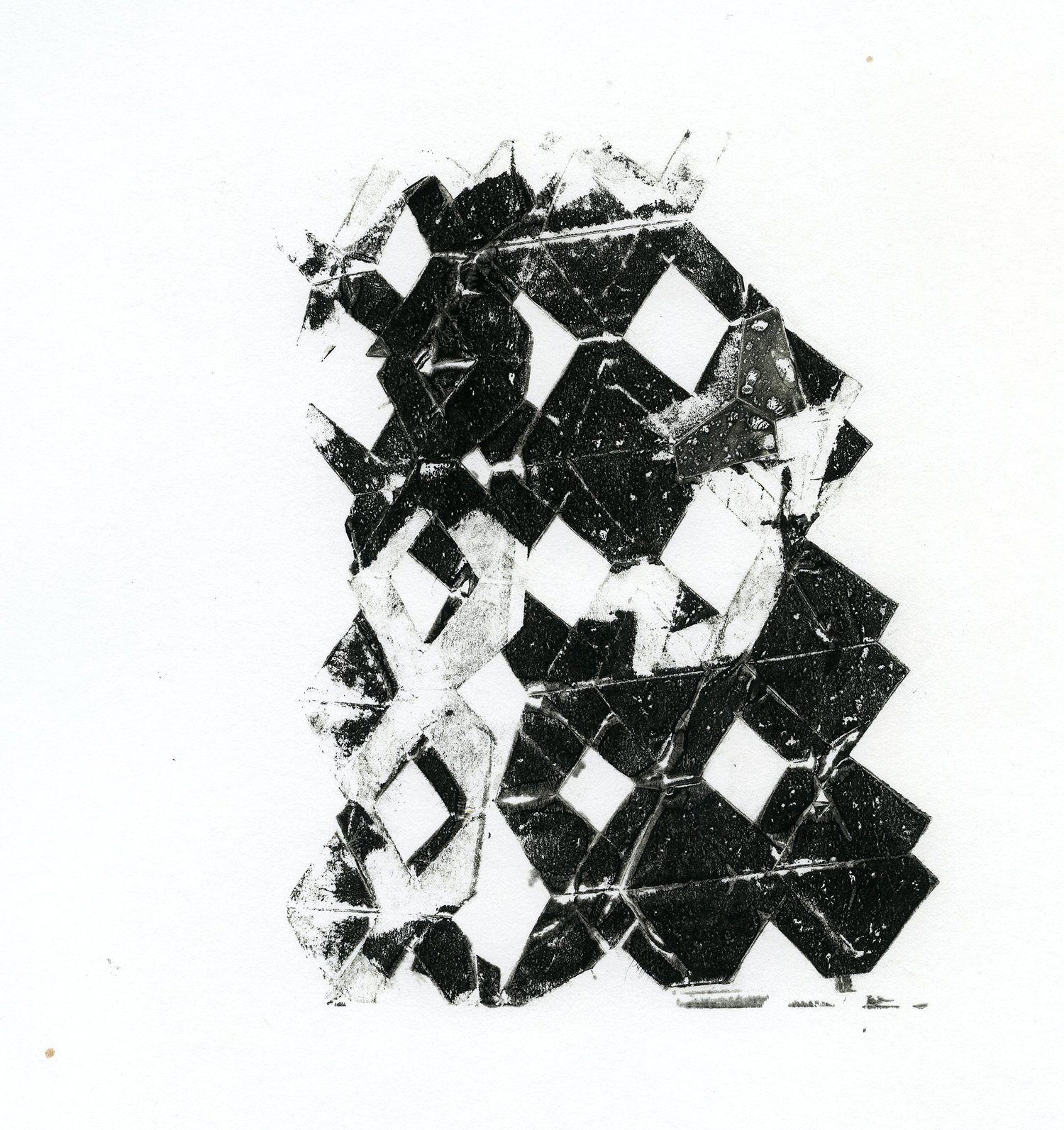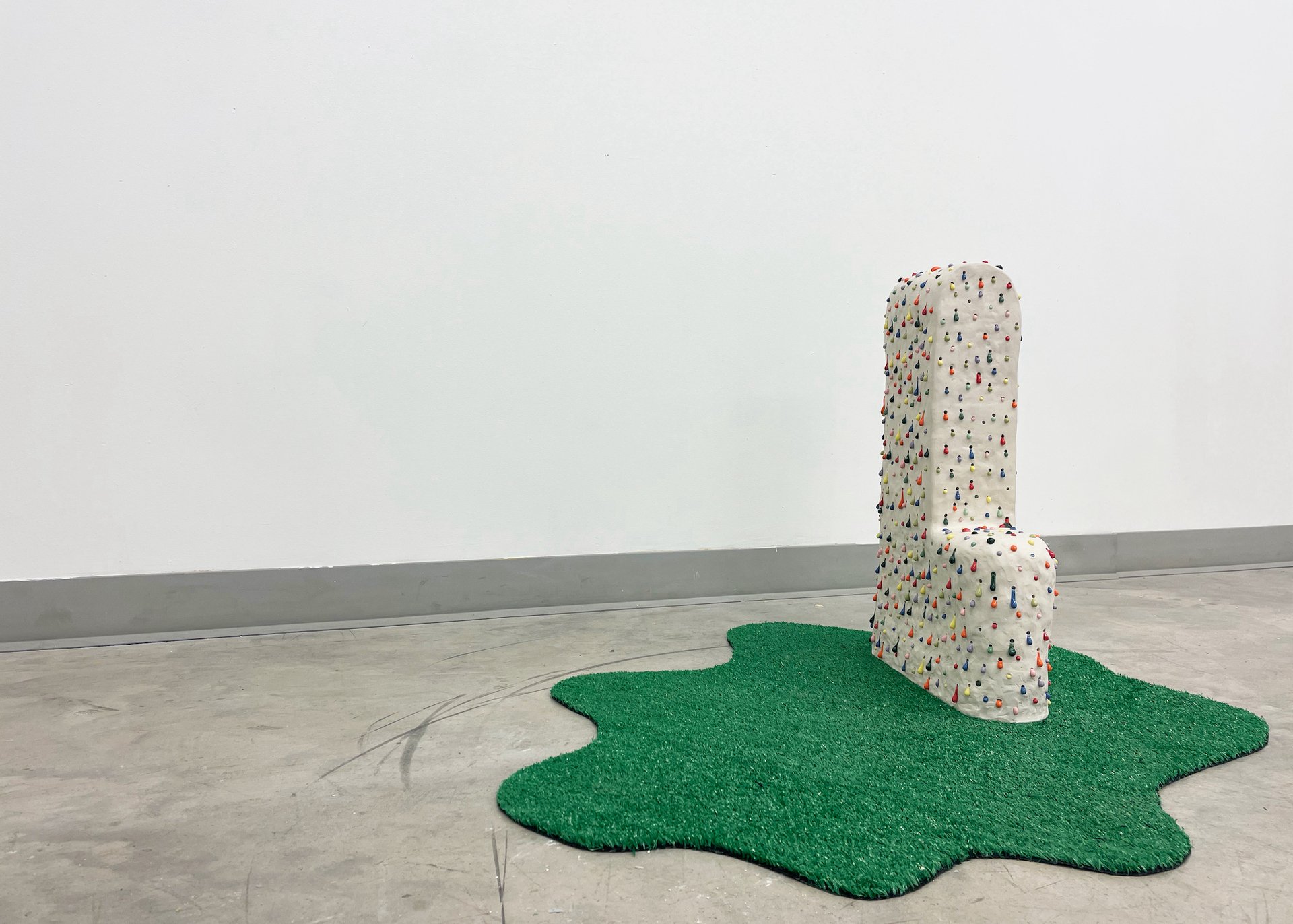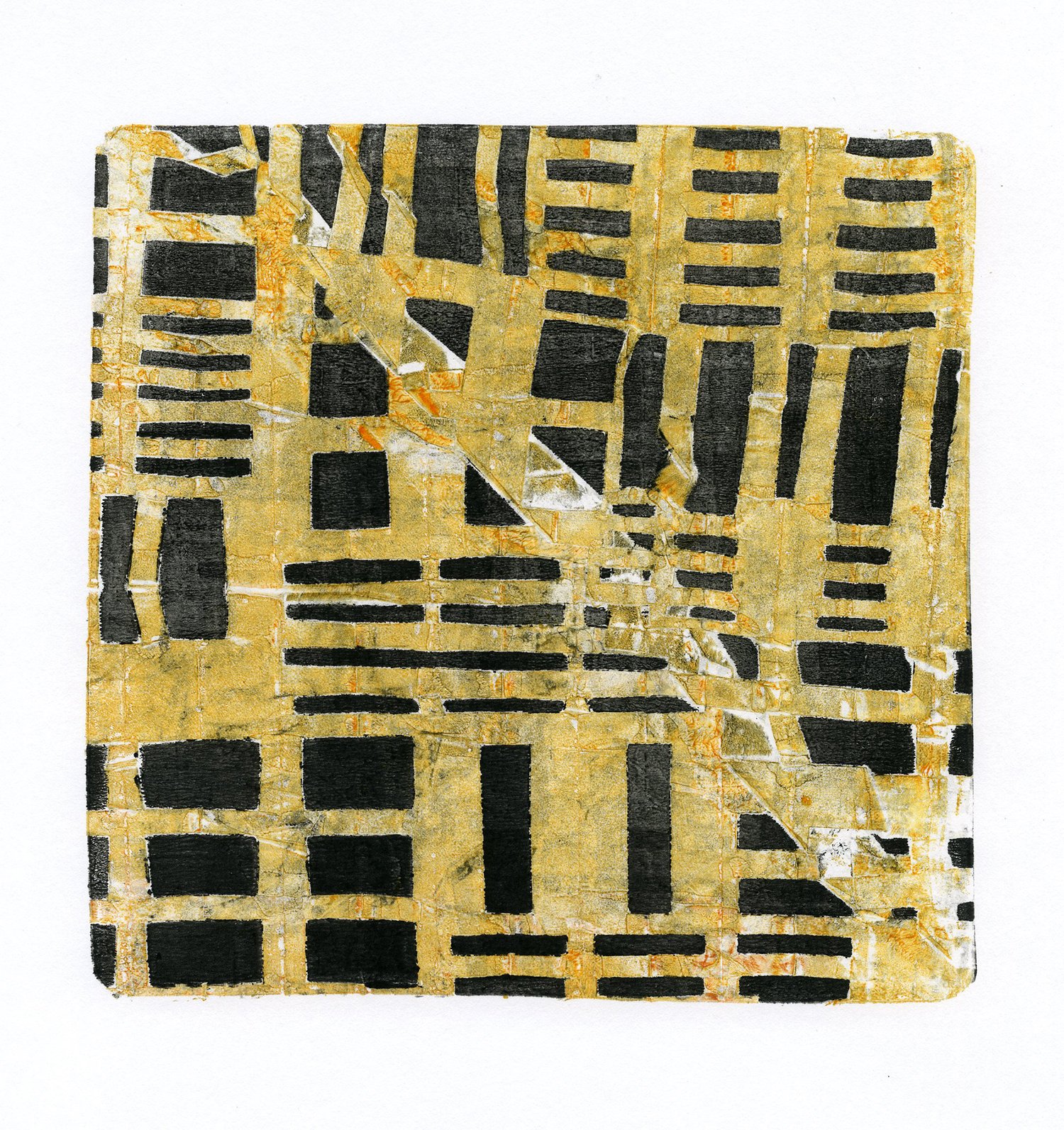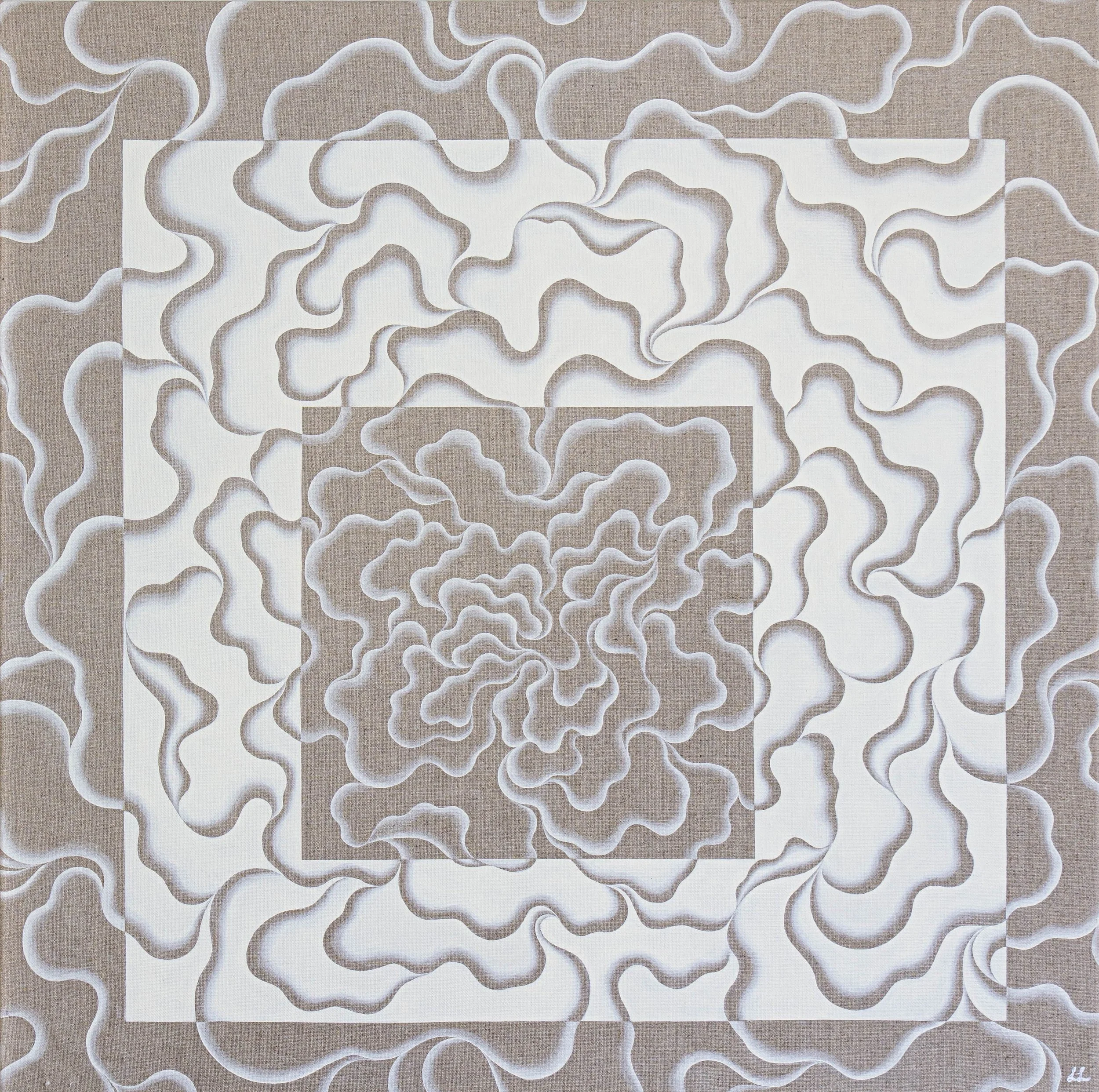Pattern & Repetition
An Online Exhibition
Juried by Angelik Vizcarrondo-Laboy
Pattern and Repetition features works by twenty-six artists employing various materials, including fiber, paper, clay, wood, mixed media, and video, that together quilt a rich picture of the versatility of patterning as an artistic strategy. Although most overtly used in clothing and home decor, patterns are everywhere, even nature. Inhabiting a spectrum, they can be minimal, complex, muted, bold, precise, organic, and range widely in scale. There are many well-known patterns, such as plaid and houndstooth. However, with only a few gestures made in sequence, a new pattern is born, intrinsically intertwining with repetition. It is a decorative technique that allows for maximum impact through a straightforward approach. Many patterns also hold cultural and historical significance worldwide, from Islamic sacred geometry to Scottish kilts and Acoma pottery. Repetition within a pattern establishes a flow that fosters balance and order, yet ironically, it can create a disorienting or maddening chaos if taken a step too far. This exhibition underscores the inherently repetitive nature of artistic labor, from cutting pieces of paper and puzzling them back together to craft a new image to building a structure by coiling clay or methodically applying droplets of glaze. Other examples include painstakingly embroidering a photograph, turning wood on a lathe, weaving a textile, and amassing found objects
Furthermore, Pattern and Repetition highlights the innovative ways the selected artists develop, interpret, amplify, manipulate, and disrupt patterns to discuss a range of topics such as gender, tradition, consumerism, and emotional duality. The grid, a structural framework, is a recurring motif in the exhibition through renderings of checkerboards, lattices, argyle. However, the artists transform squares, diamonds, and lines through sizing, color choices, positioning, and spacing to achieve dynamic abstract and geometric compositions that defy the rigidity of classic patterns. Other pieces make for a psychedelic experience through wavy linework or mirrored organic shapes, while many artists bring patterns to life through three-dimensionality or animation. Pattern and Repetition is a cacophony of familiar symbols and forms that invites reflection on our relationship to patterns and their profound potential for artistic exploration.
—Angelik Vizcarrondo-Laboy
All following commentaries have been written by Angelik Vizcarrondo-Laboy
John Allen
Migration Collage
12" x 8"
$350.00
Hannah Barnes
Caterwaul
Oil and watercolor on linen
80" x 64" x 2"
$5,200.00
Greg Bahr
Dance Route
Serigraph on Paper
13" x 13"
$1,200.00
Greg Bahr
Dance Rings 2
Serigraph on paper
15" x 15"
$1,000.00
Nancy Brooks-Siebert
#10 5/15/2021
Monoprint
6" x 6"
$125.00
Nancy Brooks-Siebert
#13 10/10/2020
Monoprint
6" x 6"
$125.00
Erin Juliana
Clasp
Fabric and poly-fil on a metal grid frame
12" x 16" x 1"
$775.00
Karen Benton
Sharing a Space
Acrylic on Canvas, yoga matting
24” x 13” x 8”
$550.00
Erin Juliana
Pied de Poule
Acrylic on panel
16" x 16" x 1"
$950.00
Minah Kim
audience
Cobalt, porcelain (fired in 1300~2140â )
25’ x 22’ x 40’
$15,000.00
Minah Kim’s audience is an incredible feat. Installing thousands of porcelain beads dyed with cobalt on the floor in the form of a grid, the artist invites the audience, as the title implies, to repeatedly walk over this ceramic sea and listen to the sounds it produces. Microphones and speakers amplify this soundtrack.
Emily Manning-Mingle
A Case of You
Oil on canvas
16" x 12" x 1"
$465.00
Emily Manning-Mingle
and it was all okay
Oil on canvas
14" x 11" x 1"
$445.00
Celeste Wilson
Gingham Glitch V
Pieced fabric
16" x 16" x 1"
$850.00
Flora Wilds
bikini quilt
Textile sculpture
7’ x 5.5’ x 1”
$7,000.00
Flora Wilds
Weaving 1
Digital collage
24" x 20"
$1,000.00
Anais Öst
Rise 2
Fine art print on cotton paper
20" x 20"
$800.00
Anais Öst’s works are reminiscent of the images found inside a kaleidoscope, injecting her compositions with dynamic psychedelic energy. The mirrored patterns along a vertical axis are strikingly similar to a Rorschach test, which invites interpretation of the abstract forms.
Anais Öst
Rainbow Bloom 1
Fine art print on cotton paper
20" x 20"
$800.00
Anais Öst
Rainbow Bloom 2
Fine art print on cotton paper
20" x 20"
$800.00
Toby Kaufmann- Buhler
Imaginary Wall Paper
3:01
$340.00
Lucy Li
A Portal to Eternity, 2020
Limited edition of 33
Inkjet print on archival Epson watercolor paper
20” x 26”
$450.00
Lucy Li
If Time Could Speak, 2021
Flashe acrylic on linen
32” x 32”
$4800.00
Lucy Li
The invisible threads that connect us no. 1
Colored pencil on paper
18” x 24”
$2700 (framed)
Julie Kornblum
Plastic in the Oceans
Fiber Art
38" x 38"
$1,500.00
Catalina Escallon Rosselli
Los Colores de Luis
Hand embroidery on paper
7" x 5"
$450.00
Catalina Escallon Rosselli
Escalas y Escalas
Hand embroidery on paper
7" x 5"
$650.00
Natalie Obermaier
What the Pharaohs Knew
Hand cut collage
10" x 7" x .2"
$1,600.00
Craig Hartenberger
Cone
Pigmented stoneware
48" x 30" x 30"
$6,000.00
Maryalice Carroll
Ooze Out
Ceramic, glaze
7" x 6" x 1.5"
$180.00
Maryalice Carroll
Funfetti Effect
Ceramics, glaze, turf
24" x 24" x 24"
$850.00
Eva Tellier
A circle is a whole
Red Stoneware, clay and glazes
45" x 7" x 45"
$2,000.00
Eva Tellier
Work in Progress
Raw stoneware clay
8" x 13" x 8"
$900.00
Eva Tellier’s A Circle Is a Whole is a columnar sculpture built using one of the fundamental techniques of ceramics, coil-building. It is a time-consuming and methodical process that requires rolling clay into long ropes, stacking them while coiling to define a shape, and mushing the clay together to establish the walls of the piece. Tellier has taken this process further by puncturing the surface to create a texturally patterned surface that she accented with glaze dots.
Keith Buswell
Bubble (disco) I
Fabric and paper
34" x 52" x 12"
$2,400.00
Scott DeWeese
Basket of Illusion #002
Wood
16" x 16" x 2"
$1,400.00
Scott DeWeese
Basket of Illusion #006
Wood
16" x 16" x 2"
$1,500.00
Scott DeWeese
Basket of Illusion #004
Wood
17" x 17" x 2"
$1,400.00
Kristy Bishop
Hills and Valleys Zig Zag
Ribbon tape, metallic yarn, handpainted cottolin warp
32" x 36"
$2,500.00
Matthew Conradt’s collages appear haphazardly cut, but they are precisely puzzled back together to create images that look fragmented, like shattered glass. We get a glimpse of what could be a highly stylized editorial fashion image now refracted. Although mostly abstract, the work has hints of iconic patterns such as stripes, marbling, and luxury brand monograms.
Matthew Conradt
Champagne Poor
Photo-transfer collage on mylar
33.5" x 23.5"
$3,000.00
Matthew Conradt
Auguries
Photo-transfer collage on mylar
33.5" x 23.5"
$3,000.00
Matthew Conradt
We Didn't Even Count Hours
Photo-transfer collage on mylar
33.5" x 23.5"
$3,000.00
Patricia Miranda
Enwrapped in arms enfolding; I
Vintage textiles, vintage books, thread, pins, steel ring
90" x 90" x 5"
$12,000.00
Patricia Miranda’s Enwrapped in Arms Enfolding: I encapsulates the inherently repetitive nature of labor through an abundant presentation of vintage aprons, napkins, and doilies, items of domestic use, in a cyclical composition. The items feature patterns created of intricate lace, crochet, and embroidery, historically called “women’s work,” which often go unappreciated like domestic work. - Angelik Vizcarrondo-Laboy
Alisha Potter
Modular
Walnut, Marble
27" x 27" x 2.5"
$6,400.00
Barbara Ellmann
GETTING SOMEWHERE
Encaustic on wood panels
76" x 76" x 1.25"
$36,000.00



